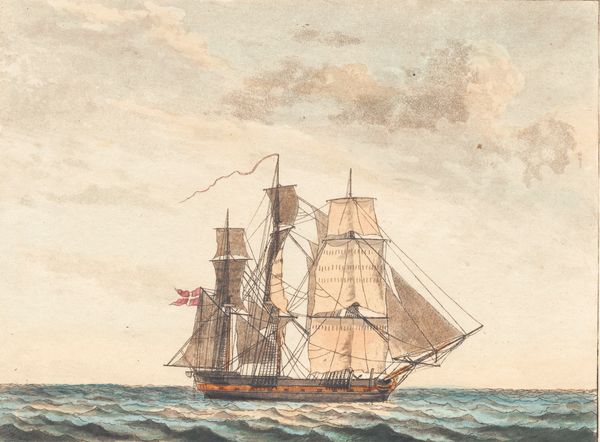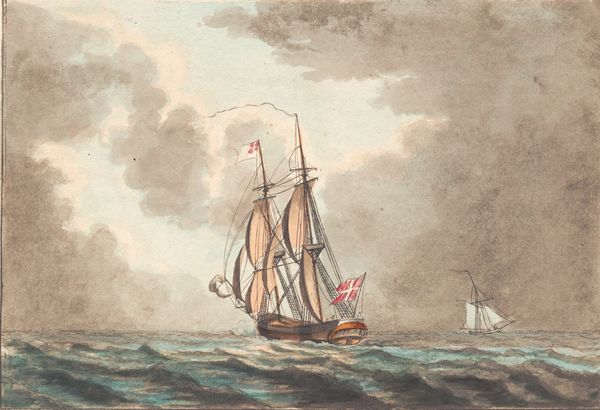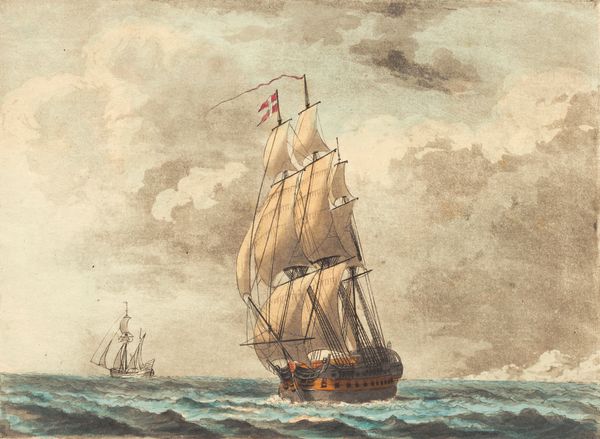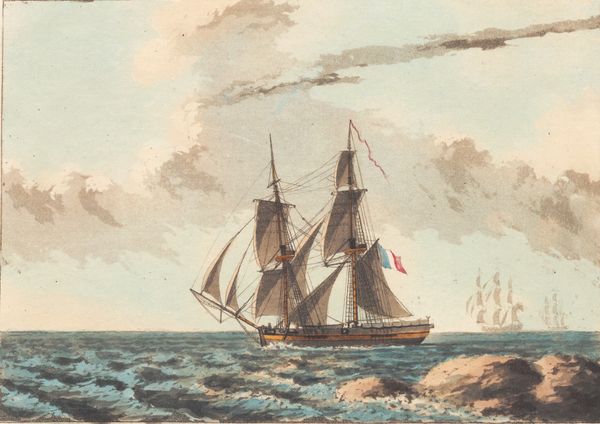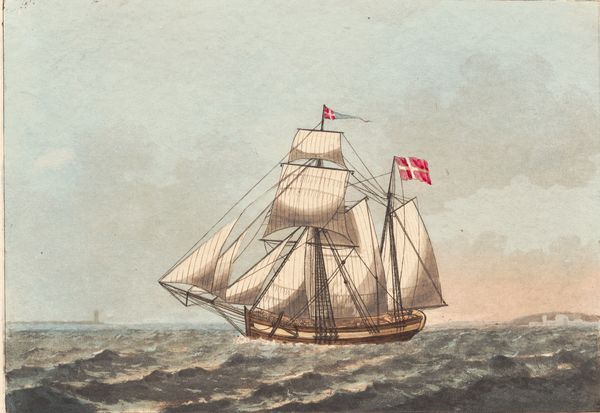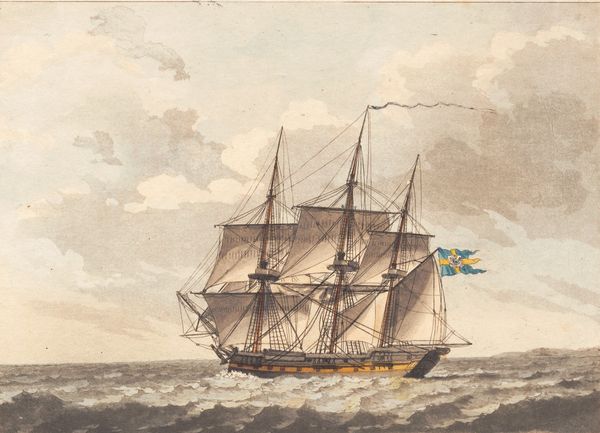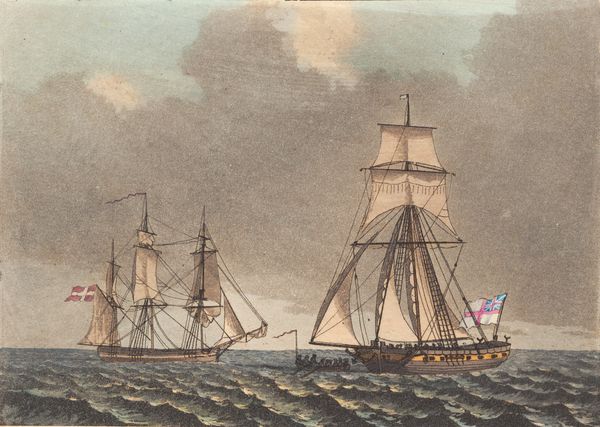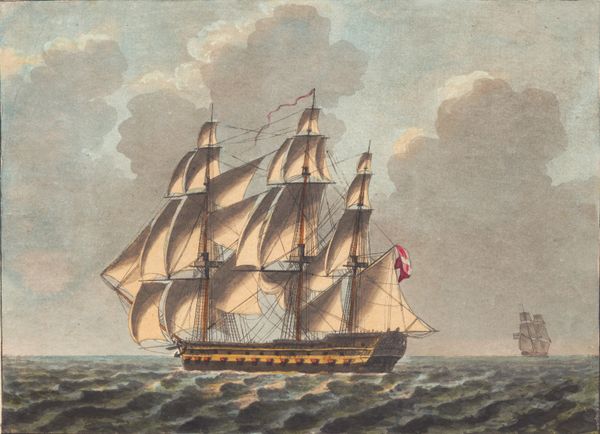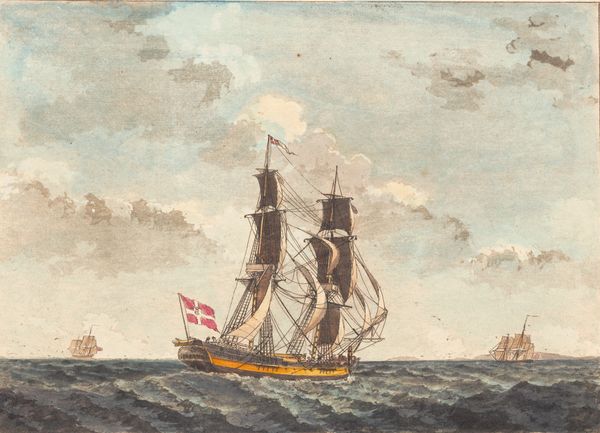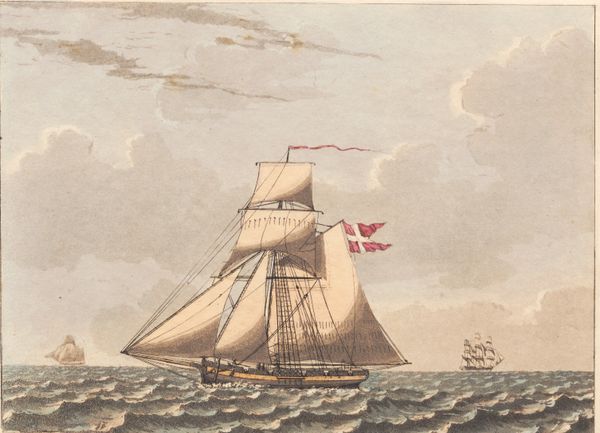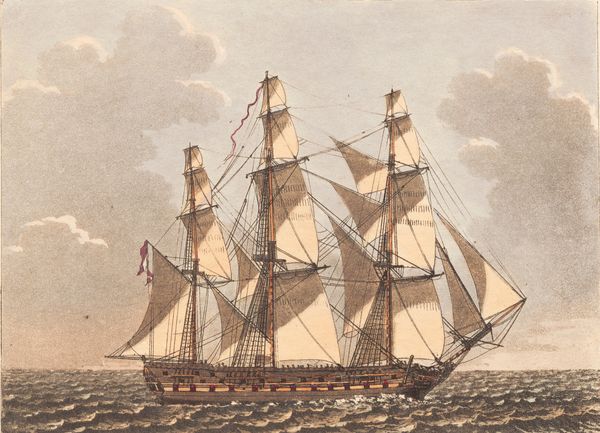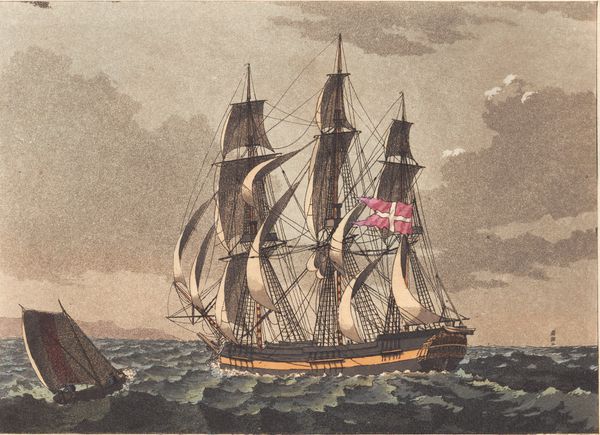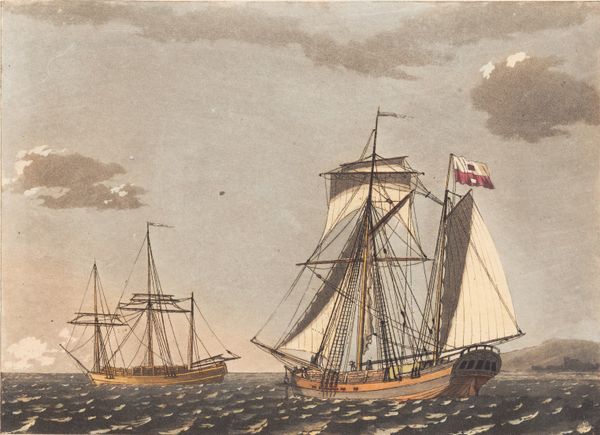
aquatint, print, watercolor
#
aquatint
# print
#
landscape
#
figuration
#
watercolor
#
coloured pencil
#
romanticism
#
line
#
watercolor
Dimensions: 180 mm (height) x 230 mm (width) (bladmaal), 155 mm (height) x 210 mm (width) (plademaal), 143 mm (height) x 197 mm (width) (billedmaal)
Curator: Ah, this image exudes such maritime tranquility. We're looking at "En dansk cutter seilende tæt under vinden," or "A Danish Cutter Sailing Close to the Wind," created around 1805. It's a print, an aquatint and watercolor work held at the Statens Museum for Kunst. Editor: My first impression is of sparseness. The palette is minimal and the waves almost mechanical, repeating shapes. Is there supposed to be serenity in this repetition? Curator: I think the artist intends to convey a sense of national pride, with that Danish flag so prominently displayed. It's a powerful emblem of identity. But perhaps that repetitive wave pattern signifies the ever present trials that threaten the Nation’s journey across time, history, and collective memory. Editor: Semiotically speaking, the flag does function as a potent signifier. However, looking at it formally, I am more struck by the linear qualities— the rigging, the mast—all creating verticality. Yet, even that upright assertion is tempered by the tilt of the boat against the wind, which offers the sensation of dynamism. Curator: The dynamism is what holds my interest, also! It makes me wonder about the symbolism of a "cutter sailing close to the wind." Is this an analogy for navigating difficult political waters? Are they pushing hard against powerful historical currents? Editor: Possibly, though consider this as a formal exercise. That straining sail forms a series of triangles mirroring and opposing each other. I wonder if that creates both literal and figural tension. The muted watercolors work together to promote reflection. It invites one to consider the subtleties. Curator: Agreed. But how can one resist thinking about external context? Especially as one considers cultural continuities and changes. At the time this piece was created, Denmark was walking a tightrope. I mean the artist is expressing his identity against very real external threats. Editor: A good reminder to consider the dialectic between artistic form and cultural forces, but if the aesthetic structure fails, does not convey it with eloquence, is not the historical detail somewhat useless? Curator: Perhaps, but I appreciate this image on multiple levels because it sparks all these reflections. Editor: As do I. A work that stands on its own but speaks through its historical location, never ceasing to teach.
Comments
No comments
Be the first to comment and join the conversation on the ultimate creative platform.
